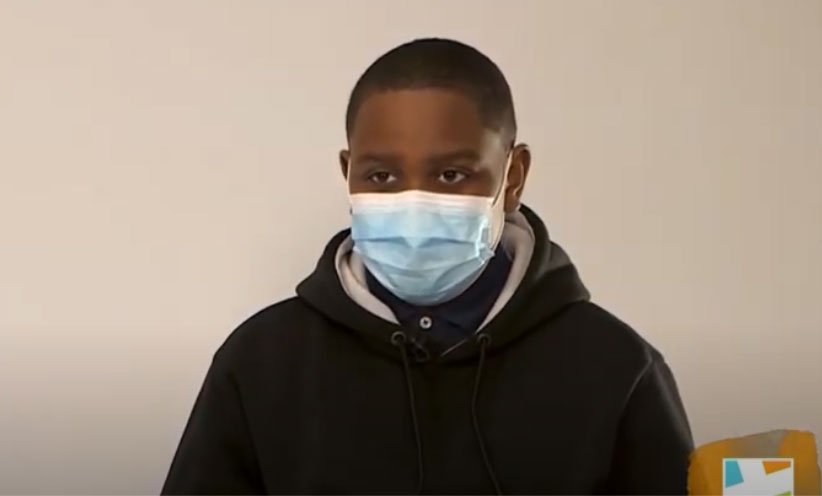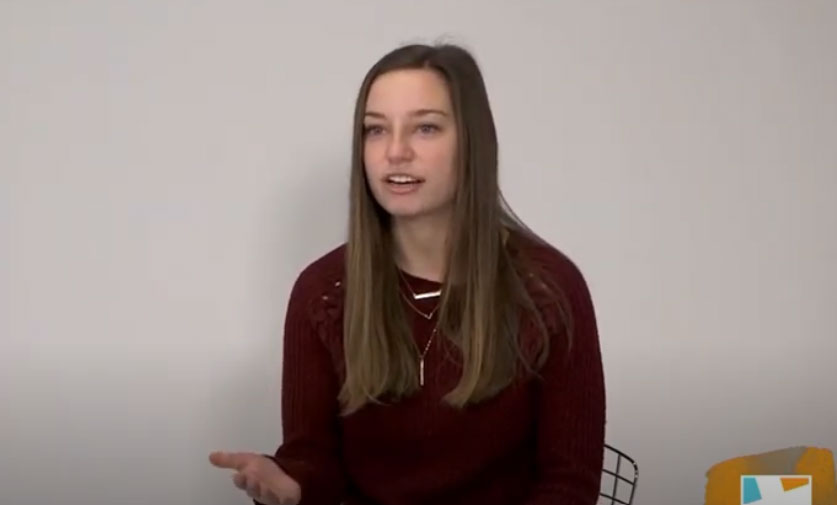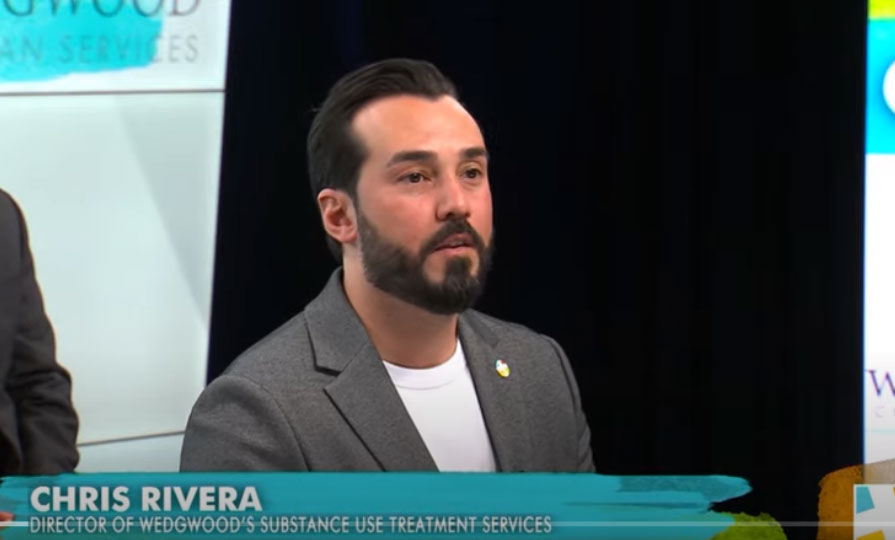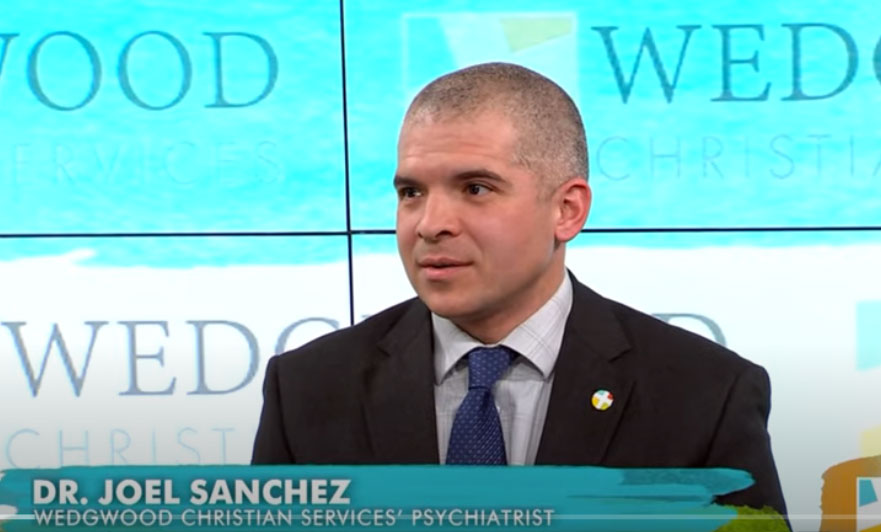Multi-districts — The presence of a global pandemic and social distancing did not stop Wedgwood Christian Services from organizing local adult professionals and teens to converse and learn from each other.
This year’s Wedgwood’s State of the Child online event brought together local ninth-12th grade students and community leaders and experts to discuss the ongoing impacts of the Covid-19 pandemic on young people’s lives and offer insight and resources to provide support. Students came from Sparta, Grand Rapids, Kentwood and Hudsonville public schools, and National Heritage Academy charter schools. Students were identified by first name only by Wedgewood.
During pre-recorded interviews with Wood TV8/WOTV 4 kids and family expert Maranda, students offered their thoughts and opinions on five topics: education, safety, mental health, substance abuse and social media. After viewing the students’ videos, the panelists took turns responding and offering their perspectives.
“It was challenging shifting our in-person event to online while still retaining social distancing and the engagement between students and panelists,” said Chief Advancement Officer at Wedgwood Christian Services Vivian TerMaat. “We decided to film in advance so we could have all the panelists in the same room and allow everyone to speak unmasked.”
Panelists included Superintendent of Integrity Educational Services Dr. Heidi Cate; YMCA of Greater Grand Rapids’ District Executive Director of Community Engagement & Youth Development Nichole Hansen; Grand Rapids Chief of Police Eric Payne; Director of Wedgwood’s Substance Use Treatment Services Chris Rivera; and Wedgwood Christian Services Medical Director Dr. Joel Sanchez.
On education:
- High School student Emily said being a student and making connections with others is really hard during the pandemic. “Because there are a lot of hybrid classes and separation of friends, it makes it hard. It’s nice to go to school every day, have a routine and see your friends.”
- High School student Melvin said his grades went up when he returned to learning in-person.
- High School student Cebrina said since the pandemic began, she looks at her education in a new way. “Instead of just memorizing problems and terms, now I see how it relates to real life and how am I going to use my education in the real world.”
- Cate applauded students for being “courageously honest. “The biggest thing I’ve learned is we need to be more focused on what students need and their emotional health. As educators, we’ve been surprised by our students’ resilience and the public awakening to the relevance of education.” She also noted the negative effects of learning outside of the classroom, including spotty internet and a disconnect between families who speak different languages.
- Hansen commented on how socializing with peers at school was something students are now realizing they took for granted. “Going to school is more than just the books; it’s about socialization and learning how to grow into young adults. We all recognized very quickly what kind of learners our students are and adapted to make sure the children we’re serving continuously learn.”
- Sanchez said he’s found for some students, virtual learning has been ideal while others find it difficult to navigate. “It’s been eye-opening for parents to witness their children’s struggle with education, grasp at new things, fall behind and require extra support. When we talk about going ‘back to normal’ we have to question if there are opportunities to return to something better than normal.”
“Instead of just memorizing problems and terms, now I see how it relates to real life and how am I going to use my education in the real world.”
— Cebrina, local high school student
On safety:
- High School student Camelin identified the pandemic as adding another layer of stress and anxiety to going to school that already existed because of threats of school shootings and other forms of violence.
- Chief Payne said it was interesting at the beginning of the pandemic because so much was unknown. “As things loosened up last summer, the community reacted and we saw an unprecedented level of violence in the city. Due to social distancing, we were not able to engage as much for their safety. This year, we’ve started to engage more and enforce more.”
- Cate commented on how the pandemic exponentially impacted students who were already disadvantaged or on free or reduced lunch. “One of the things I’m concerned about is the high schoolers who work to help families and the potential increase in dropout rate for those living under more stress than before.”
- Rivera stressed the importance of embracing telehealth and maintaining safety and distance measures to continue providing therapy.
“Fatigue sets in after operating on survival mode for so long and now that everyone is coming out of isolation and addressing fatigue, we’re left with a tsunami of mental health needs.”
— Director of Wedgwood’s Substance Use Treatment Services Chris Rivera
On mental health:
- Emily said for some, being in isolation eventually became easier than going outside. “It’s hard to get out of that cycle. We’re trying our best and we’re all going through this and coping in different ways.”
- Cebrina said she benefited from talking to her classmates and family during the pandemic to share how she was feeling. “Don’t try and hide your feelings from the people around you and practice gratitude.”
- High School student Sparsh said the stress to succeed in school is already taxing and the pandemic added to the stress. “Teachers, don’t push us too hard. It’s been a tough year so lay off a bit, please and thank you.”
- Riviera said the theme for 2020 was uncertainty. “Fatigue sets in after operating on survival mode for so long and now that everyone is coming out of isolation and addressing fatigue, we’re left with a tsunami of mental health needs.”
- Hansen witnessed an increased need for grace in the after school youth programs. “These kids are going through a lot and we have to give them grace. As a leader in youth development, it’s our responsibility to understand the barriers these kids are facing, pivot from our plans if needed and to be patient.”
On substance abuse:
- Cebrina said she sees a lot of pressure for young people to engage in substance use and increased anxiety is causing people to use more.
- Camelin said teens often use substances as a way to socialize with their peers.
- Sanchez is not surprised by the increased trend of teen substance abuse. “With this age group having more down time and heightened anxiety, it makes sense. The conversation starts with education and being able to acknowledge its happening and talk about it with students.”
- Hansen said in her experience, “for youth who value their sports and physical health, they generally stay away from using, despite their friends doing it.”
“As educators, we’ve been surprised by our students’ resilience and the public awakening to the relevance of education.”
— Dr. Heidi Cate, superintendent of Integrity Educational Services
On social media:
- Emily said it’s nice to be able to see someone through your screen and keep in contact with friends and family.
- Camelin credits social media as a help and a hindrance to her mental health. “Sometimes I have to delete apps for a break and try to limit screen time.”
- Hansen said there is an education that needs to come along with teens using social media. “Behind that creativity of new dances and videos can come bullying and unsafe behaviors, social anxieties and ‘FOMO,’ or fear of missing out.”
- Payne said he encourages his 16-year-old daughter to stay away from the negative side of social media. “Also, a lot of the violence we’ve seen in Grand Rapids during the pandemic started on social media.”
Advice for communicating with teens:
- Cate believes there is an opportunity to practice something old fashion. “Sit down and talk with our kids, but I envision it as them talking and us listening. We listen more. We’re a resource rich community; let’s use that to help the young adults of the future develop grit and resilience.”
- “Teens are a lot stronger than we give them credit for. The pandemic has been trying, but there is something to be learned from the adversity,” Rivera said.
- “See the positivity and unique students bring to our world,” Sanchez said.
- “Communicate if you’re struggling. It’s easy to shut down and not advocate for yourself, but it’s about finding your own voice,” Hansen said.
- Payne said this generation is defined not by the pandemic, but how they overcame it. “We have to make sure we give teens the opportunities to excel. It’s been a disruption, but i’m encouraged that they will rebound and be greater than ever.”




















